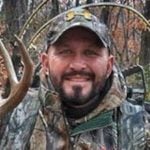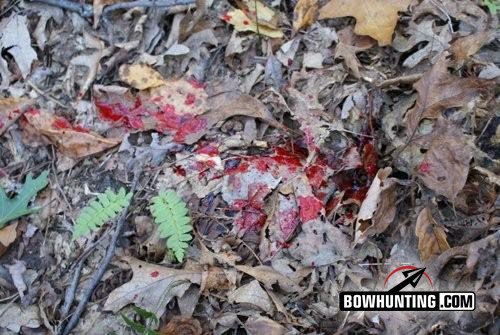LAST UPDATED: May 8th, 2015
Let’s get right to the point. When you reach “full draw” on an animal that can kill you,if it chooses to do so the intensity level is, to say the least, high. And while a black bear may not seem as ominous as a grizzly or brown bear, the threat of bodily harm still remains. In fact, black bears can prove to be more dangerous simply because of their unpredictability and our own skepticism regarding just how much of a threat they really are. This leads many to let their guard down, thus opening the door for something bad to happen. However, if you find yourself face to face with a bruin, on purpose or otherwise, fret not; archery tackle can spell bad medicine for even the toughest black bear.
Confidence in your equipment can go a long way toward keeping you calm and steady when the moment of truth arrives. Choose your weapon wisely.
Intimidation Factor
In my opinion, the most difficult part of trying to harvest a black bear with a bow is dealing with the “intimidation” that usually accompanies such a task. Like I said, when you draw back on a potentially dangerous animal, it isn’t like drawing back on a whitetail buck. Yes, emotions will be heightened, and excitement levels will rise, but trust me, it is a different emotion—one that certainly requires a different thought process.
Black Bears don’t look so intimidating once they are off their feet. In fact, “ground-shrinkage” is common and often drastic in most cases.
The first thing you need to realize is that black bears are not known to be “man-eaters”. Although they have attacked and mauled humans, for the most part, they are just as afraid of you as you are of them (where have we heard that before). Quite often, you will never even know that you have spooked one in the woods because they will flee the scene long before you arrive. Also, despite their “hulking” stature, black bears are rather small once they are on the ground, stone dead.
I learned this fact on my first black bear hunt in Canada many years ago. The first time I saw a bruin I was amazed at how big it “appeared”. However, I was even more shocked when my guide and I approached the bear after I introduced him to the business end of my arrow. In all honesty, I didn’t believe it was the same animal I had shot just moments before. Part of my misconception was due to the intimidation factor, and some of it was a result of a black bears nature to “puff” itself up in an effort to appear bigger than it actually is; especially when approaching a bait sight or otherwise. When you combine those two stimuli it is easy to see how an approaching bruin can seem larger than life. However, in actuality, they are most often the opposite.
Point of Impact
The largest part of a black bear, and certainly the one area you want to avoid hitting with an arrow, is the front shoulders. This area is very big and muscular and obviously presents the greatest obstacle for your broadhead and arrow. Apart from that region, black bears are rather small. Therefore, placing an arrow tight behind the shoulder (not into it) is of utmost importance. I have killed whitetails by driving an arrow through the shoulders (not on purpose), but I try to avoid such a shot scenario at all costs when it comes to black bears.
You don’t need heavy draw weight to take down a black bear. It can be done using moderate poundage and a sharp broadhead—if shot placement is good. The author’s wife (pictured here) has taken numerous bear with such equipment.
Unlike whitetails, the coat on a black bear is, well…..black. As a result, there are no defining colorations separating or outlining the shoulder from ribs like that of a whitetail. Instead, when you peer through your peep-sight at a black bear all you see is BLACK. This can make the task of “picking a spot” much more difficult, which in turn, can result in botched shots.
When faced with shooting a black bear, I try to divide the animal in half. In other words, I will establish a horizontal center line, and then a vertical center line. Together the two will make sort of a “crosshair”. This will usually give me a good “starting point”. The main thing is not to stray too far to the “rear” of where these two lines intersect because that could result in a gut shot animal, which we all know is bad news. Once I establish where these two lines intersect, I move my point of aim slightly toward the shoulders; making sure I don’t aim directly into the shoulder but rather tight behind it (if I can properly make out the shoulder region). After that, I leave the rest up to my broadhead and arrow.
Locating a “defined” aiming point in a sea of BLACK can make proper shot placement difficult. Therefore, take a few extra seconds to make sure your sight pin is in the sweet-spot before dumping the bowstring.
Blood Flow
Most often, the blood trail of a bow-shot whitetail will more closely resemble that of a “road”; even more so if shot placement is good and broadheads are sharp. This is due mainly to the short, rather non-absorbent hair of a deer. Black bears, on the other hand, are entirely different. Even when your arrow blows through the boiler room of a bruin, its long, sponge-like hair will often prevent a great deal of blood from hitting the ground. Don’t let this fact discourage you from taking up the trail or naively assuming that you have made a bad hit. I have shot, and trailed, bears that scarcely bleed a drop—-despite the fact that they were mortally hit. Sometimes the blood trail will be good, but don’t be surprised if it isn’t. Trust your instincts and take up the trail until you’ve exhausted all effort to find the animal.
Blood on the ground makes tracking easier. However, when trailing a black bear, it isn’t necessarily an indication of a well-placed arrow. A bear’s thick coat will often soak up a lot of the blood before it hits the ground.
Odor Control
Bears, for the most part, have poor eye-sight. However, they can easily detect movement and without question have very good hearing. But perhaps their greatest defense is their nose. With an unbelievable ability to “sniff-out” danger, food, or a mate, black bears will likely smell you before you even see them. Most often, when hunting over bait, bears will approach downwind despite the fact that they may smell danger. Heavily baited areas are marked with human scent (mostly unintentionally) and therefore many bears become accustomed to it and can’t distinguish between “baiter” and/or “hunter”. While smaller, immature bears may come close I believe the oldest, largest, and wisest bears often shy away until nightfall; never presenting a shot.
Regardless of where you hunt black bears, strict attention to odor is paramount for success. Take every “scent-reducing” precaution you can or the hunt will be over before it starts. Pictured here is the latest breakthrough in odor control technology, Under Armour’s new Scent Control clothing line (available summer 2012).
If you happen to be hunting black bears in a big-timber setting, such as I do, then odor control is critical. In most instances baiting is not legal and therefore any hint of human odor near your stand will send bears running in the other direction. With that in mind, the same steps that are taken to fool the nose of a whitetail must also be followed when hunting bears. In fact, your efforts should be increased because, yes, they can smell that good. Use of a product like Tink’s B-tech odor eliminators is an absolute must when hunting black bears. From the hair & body wash to the field sprays, I recommend using them all to keep your human scent down to an absolute minimum. Above all else, too much scent can ruin your hunt before it even begins.
Conclusion
With the end of turkey season fast approaching, it’s time to shift our focus to spring black bear. Regardless of whether you are hunting with an outfitter or in your own backyard, consider these key points before hitting the woods. If you do, I promise you will be the one doing the intimidating in the spring bear woods. Good luck!

 By
By 




